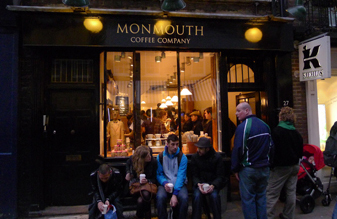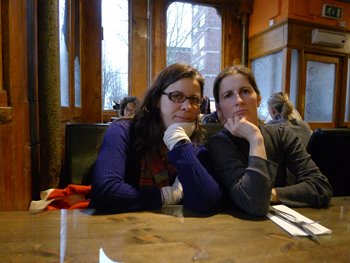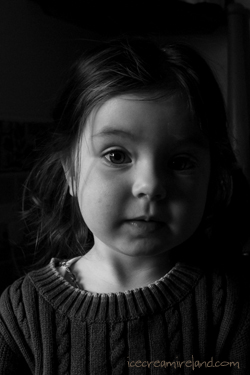 I promised a little while back that I’d let you know how I was getting on with the Leica D-Lux 5, and I’ll finally get around to it here.
I promised a little while back that I’d let you know how I was getting on with the Leica D-Lux 5, and I’ll finally get around to it here.
I don’t think there’s any point for me to go into the technical stuff, since you’d find that readily on the web. Rather, I’ll simply give my impressions and a few examples and hope it’s of some help. After all, I’m not a pro – it’s just my opinions!
 First of all, I’ll state the negatives, starting with the obvious: it’s a compact camera, and so there are limitations that come along with that – especially from the small lens and small sensor. Although most images are good enough to use, there are times where there is more pixelation than with my Nikon D300, and the pixelation is a bit rougher. You also don’t have the same sense of depth of field as with a longer lens.
First of all, I’ll state the negatives, starting with the obvious: it’s a compact camera, and so there are limitations that come along with that – especially from the small lens and small sensor. Although most images are good enough to use, there are times where there is more pixelation than with my Nikon D300, and the pixelation is a bit rougher. You also don’t have the same sense of depth of field as with a longer lens.
It’s also not as speedy – no firing of lots of frames per second. However, it’s much faster than my previous D-Lux 2, which was hardly usable on anything that wasn’t stationary, and I haven’t found it too slow.

Now the positives. First – it’s light, tight, and tidy. After bringing it to Venice and elsewhere, it’s getting harder and harder to convince myself to drag out the big camera and heavy lenses. You can have it in your coat pocket, just in case you see something interesting.
Next, the colour rendering is absolutely fantastic, especially in tricky light situations. This camera consistently delivers the closest colours to what my eyes see of any digital camera I have laid my hands on. In the photo above of Róisín, that’s exactly how she looked and how the colours looked. It was a tricky enough shot for most cameras – a dark kitchen with the last evening light coming in from a nearby window.
 Another example is this photo I took of Monmouth Coffee in London, just after dark. It captures the cold streetlight outside, and the warm glow inside. That’s exactly how it looked, and I didn’t fiddle with settings – I just snapped a shot. It’s a situation most cameras would find a bit of a struggle.
Another example is this photo I took of Monmouth Coffee in London, just after dark. It captures the cold streetlight outside, and the warm glow inside. That’s exactly how it looked, and I didn’t fiddle with settings – I just snapped a shot. It’s a situation most cameras would find a bit of a struggle.
Another big plus is how it handles low light – it has a 2.0-3.3 lens that’s a vast improvement over previous models, and they’ve improved the software as well. It delivers usable shots up to 1600 ISO.
 It also does extremely well in contrasty situations. In the photo on the right, the main light source in this darkish London cafe was the window directly behind Manuela and Cara. Not only did the camera keep their faces bright enough, but it managed to deliver excellent colour and even keep the detail outside in the primary light source. My Nikon would not have managed that. Either the window would have been blasted out white, or the faces would have been dark or both. You’d never know, looking at the shot, how dark it was inside.
It also does extremely well in contrasty situations. In the photo on the right, the main light source in this darkish London cafe was the window directly behind Manuela and Cara. Not only did the camera keep their faces bright enough, but it managed to deliver excellent colour and even keep the detail outside in the primary light source. My Nikon would not have managed that. Either the window would have been blasted out white, or the faces would have been dark or both. You’d never know, looking at the shot, how dark it was inside.

There’s been lots of discussion on the web (and indeed among photographers I know) whether it makes sense to fork out more for the Leica brand when the Panasonic LX5 is identical in terms of hardware, including the lens (Leica is owned by Panasonic). The only difference appears to be the software – how the cameras render an image. That might seem a small difference, but to me the feel of a photo is worth quite a bit.
My father has the Panasonic LX3, and I haven’t found the images comparable to either the D-Lux 5 or my previous D-Lux 2 (and both of us are simply happy snappers, not professionals, so it really seems to be the software). The photo of Declan on St. Patrick’s Day is a good example – I just snapped it off, but it has a nice mood to it.
 Which brings me to the black and white settings and processing, which are great. With past cameras, I’ve shot colour and converted it to black and white in Photoshop. With this camera, I’ve been using its black and white option quite regularly with good results. One of the nicest features of the camera is that you can set it to fire a burst of three shots that you set differently – at the moment I have it set for colour, black and white and black and white high contrast. So this last photo of Róisín was shot in a burst with the colour one at the top of this post. It’s a feature I love!
Which brings me to the black and white settings and processing, which are great. With past cameras, I’ve shot colour and converted it to black and white in Photoshop. With this camera, I’ve been using its black and white option quite regularly with good results. One of the nicest features of the camera is that you can set it to fire a burst of three shots that you set differently – at the moment I have it set for colour, black and white and black and white high contrast. So this last photo of Róisín was shot in a burst with the colour one at the top of this post. It’s a feature I love!
Anyway, I can recommend this camera to anyone who loves photography but doesn’t want to lug around heavy kit. It’s very expensive for a compact, but I think it delivers value, since although you won’t get the quality of a good SLR with good lenses, it’s reasonably close for most purposes and costs a whole lot less.
Technorati tags: digital, camera, Leica, d-lux 5, Nikon, photography












I like the photos you took with this camera… funny, I was just thinking about a new camera for my Irish postcards. I will have to look into this one. 🙂 So glad I stopped by today.
I liked your review. Only one thing – Panasonic do not own Leica as you stated but Panasonic and Leica work together on the cameras and lenses.
I too have a D-Lux 5 am impressed with the quality of the photographs taken. The only bad point that I’ve found is the macro feature – it’s not very, well,
macro or at least that is my personal experience. Nice review though…
Nice images and review. Besides the price, which one would you recommend, Leica d-lux 5 or Nikon p300? What I like about the p300 is the 1080HD video. How does it stand against the d-lux 5? Thanks
Cindy – I don’t know the Nikon p300, so I can’t comment on that. I have the D300, which is a different beast altogether. Macjim – Thanks for clarifying that the ownership. That’s news to me. As for the macro, I haven’t used it much, but I have a great macro lens for the Nikon (105), so I’m spoiled!
Nice photo you have posted. I just bought the D lux 5 couple weeks ago, didn’t have much time to mess with it yet. One question I have is – can this camera take fast/continuous shots like (when your kids are playing soccer. If so, what setting I need to set?
I haven’t found it a great sports camera. It will do as burst of three shots, which you can set up. Just make sure your shutter speed is fast enough!
Thanks for this evenhanded and insightful review.
I am vacillating between the Sigma DP1/2, the Leica D-Lux5 and the Leica x1, although I’m not at all sure I could convince my wife that the price of the X1 is rational and anything more than obscenely self-indulgent.
My take on the difference between the D-Lux5 and the Sigma DP1/2 is that the 5 does not quite have the magic of the Sigma, but is immensely more versatile and even more reliable in terms of colour veracity and exposure appropriateness, leading to a different kind of satisfaction with the picture. Also, the D-Lux 5 is significantly better in low light, it appears.
I have only recently included Leica in my search for a Fuji F31fd replacement (it was stolen), but I have often been delighted with images I have seen coming from the x1 and even the D-Lux 5 (including yours!). I don’t see what the fuss is about the Fuji X100; none of the images I have seen from it do anything at all for me.
I am beginning to think that there is a lot to be said for the skill that Leica brings to image handling, and this is perhaps most clearly demonstrated by the D-Lux 5/LX5 comparison where the lens and sensor are the same but the results are vibrant on one hand and flat on the other.
Thanks. You have helped clarify my thinking. I think I will buy the D-Lux 5 while I wait to see what Leica replaces the X1 with.
I wonder what Leica could do with the Foveon sensor…
One thing to keep in mind about the price difference between the D-LUX 5 and the Pany is Lightroom 3. A lot of people seem to overlook this, perhaps incorrectly thinking LR3 is “bundle ware”.
LR3 is a $300 piece of professional photo finishing / project management software. Between that and an additional 2 years of factory warranty, the price difference is easily justified!
That’s definitely the reason I made the choice to pull the trigger on this little gem of a camera. I’ve been looking for an excuse to pull the trigger, but was hesitant with the equivalent Panny out there for cheaper. However, I’ve been an Aperture user for the last several years, but decided to switch to Lightroom since Apple appears to be abandoning pro apps in favor of consumer ware. When Isaw a FULL VERSION OF LIGHTROOM bundled with it, my jaw hit the floor!
So basically, I bought Lightroom, and got a D-LUX 5 with it’s fantastic warranty for $100 more than the Panasonic. Plus, I got that fantastic little red dot to boot.